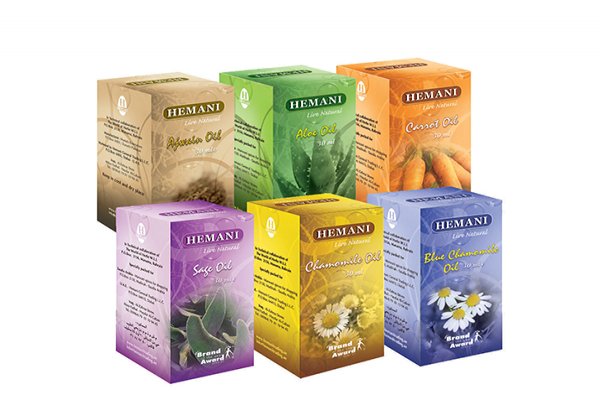Essential oils

Everything you need to know about essential oils
Essential oils are mixtures of volatile, biologically active compounds derived from plant material by distillation or pressing. Essential oils due to small molecules and lipophilic through the skin quickly enter the body. In order to reduce the rate of entry, apply essential oils to your skin diluted in vegetable oils. Thus, we reduce possible skin damage that can occur due to the application of pure essential oil to the same, preventing the sudden entry of essential oil into the body (some oils contain toxic components, and due to sudden entry into the body can cause adverse side effects). Also, slow absorption enables a longer presence of therapeutic components in the blood, or target tissue.
How to know what good oil is
Essential oils are necessarily labeled with the Latin name of the genus (eg. Thymus) and plant species (eg. vulgaris).
A quality essential oil, on a bottle or declaration must have indicated from which part of the plant is obtained and on what way.
The following information must be indicated on the bottle, declaration or certificate:
1. Latin name of the genus and species of the plant
2. Part of the plant from which essential oil is obtained
3. The method of obtaining an essential oil
4. Chemotype or the main chemical components of essential oils
5. Country of origin of the plant material from which essential oil is obtained
6. The method of growing plant material
7. LOT number
8. Date of Expiry
10 most commonly used oils
Today, we can find a large number of aromatherapy oils, each of them has specific medicinal properties. It is necessary to know how to choose the right one. Aromatherapy is a branch of complementary medicine that controls the essential oils in order to balance and improve the health of the body, mind and spirit.
1. Eucalyptus (Eucalyptus globulus or Eucalyptus radiate)
It helps in the treatment of respiratory problems, such as cough, cold and asthma. Strengthens immunity and relieves tension in the muscles.
2. Cauliflower (Melaleuca alternifolia)
Natural antifungal oil is good for treating all kinds of fungal infections, including vaginal, overgrowth, and fungal infections of the feet and lichen. Strengthens immunity.
3. Lavender (Lavandula angustifolia or Lavandula vera)
It is useful for treating wounds, burns and skin care. Relax.
4. Mintha piperita
It is used to treat headaches, muscle pain, digestive disorders such as slow digestion, constipation or inflammation.
5. Rosemary (Rosmarinus officinalis)
It raises mood and strengthens immunity, and serves as a mental stimulus. It helps to remove muscle pain and stimulates digestion.
6. Lemon (Citrus Lemon)
Successfully raises mood, but also relaxes. It is used in the treatment of wounds and infections. It is also a good freshener.
7. Ylang ylang (Cananga odorata)
It can reduce muscle tension, helps with relaxation. It's very good antidepressant.
8. Roman chamomile (Anthemus nobilis)
Relaxing oil can help with embarrassment and insomnia. It relieves pain in muscles and tension. It is also useful in the treatment of wounds and infections.
9. Geranium (Pelargonium graveolens)
It helps to balance women's hormones, and it is also useful for the skin. It works relaxing and raising the mood. One of the better natural antidepressants.
10. Muscat sage (Salvia sclarea)
It is a natural pain relieving agent. It is very relaxing and can help with insomnia. It is also effective in balancing hormone work.
Methods of application
Essential oils can be used in three basic ways: applying directly to the skin, inhaling or swallowing.
For each of these methods, there are several methods of application. It is possible to apply them locally using coatings, sprays, baths or rubbing in the skin.
NOTES:
- some essential oils irritate the skin due to their chemical composition. Such oils should be further diluted or, better still, by inhalation. The method of applying essential oils depends on what we want to treat and what effect you plan to achieve.
- Wound healing or the treatment of fungal infections often involves local application. Mood effects can be achieved by inhalation or by local application. In the expected rapid action, inhalation is a much better choice. Baths with essential oils include both inhalation and classic local application.
Bath
Add five drops of essential oil to a tub filled with water. Stir them to scatter as nicely as possible.
Perfumes
Only use oils that are safe for the skin. Dilute essential oil with water in a ratio of 1: 3 and add to jojoba oil or refined coconut oil.
Massage oil
Pour 15 drops of essential oil into 30 grams of base oil (can be oil, cream, lotion or melt) and stir.
Inhalation
Pour a few drops into the diffuser of the electric diffuser or on the wipes and breathe.
For steam inhalation, use a hot water bowl, add a few drops to the surface and inhale.
Safety precautions
You can have many benefits from aromatherapy, but it is also necessary to take certain precautions when handling essential oils.
- Use only recommended quantities. If you suspect that you have used too much oil, drink plenty of water and deep breath in fresh air.
- Read the warnings on the essential oil package. Some of them may not be combined with medication or alcohol.
- Keep essential oils out of sight. If the oil comes into contact with the eye, rinse with a large amount of hot water and seek advice from a doctor.
